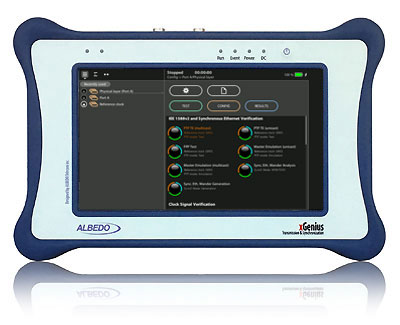MPLS Traffic test
MPLS is considered a reliable and efficient technology for supporting mission-critical applications as it provides a mechanism for efficient packet forwarding,allowing for the creation of virtual private networks (VPN)
BARCELONA NOV.20.2023
About Multiprotocol Label Switching (MPLS)
MPLS, or Multiprotocol Label Switching, is a protocol to redirect data packets between network nodes. It is part of the family of packet-switched networks and is employed in Wide Area Networks (WAN) to optimize the traffic while improving the performance. MPLS operates at Layer 2 and Layer 3.

Fig 1. MPLS decoding with xGenius or Zeus.
MPLS features
- Label Switching: MPLS uses labels to make forwarding decisions. Each packet is assigned a label that indicates the path it should take through the network. Unlike traditional routing, which examines the packet’s destination IP address at each hop, MPLS allows routers to make forwarding decisions based on the labels, making the process more efficient.
- Label Switch Router (LSR): A Label Switch Router is a network device that participates in MPLS. LSRs use labels to make forwarding decisions and can swap or push new labels onto packets. Routers at the edge of the MPLS network are often called Ingress LSRs, while those at the core are referred to as Transit LSRs.
- Label Distribution Protocol (LDP): LDP is a protocol used by routers in an MPLS network to exchange label mapping information. It ensures that all routers in the network have a consistent understanding of how to forward packets based on the assigned labels.
- Forwarding Equivalence Class (FEC): A Forwarding Equivalence Class is a set of packets that is treated similarly by the network. MPLS uses labels to distinguish different FECs, allowing routers to forward packets based on common characteristics rather than examining each packet individually.
- Traffic Engineering: MPLS enables network operators to optimize the flow of traffic by directing it along specific paths. This is particularly useful for managing network congestion, improving bandwidth utilization, and ensuring Quality of Service (QoS).
- Virtual Private Networks (VPNs): MPLS is commonly used to create Virtual Private Networks, allowing different customers’ traffic to be logically separated and secure within a shared network infrastructure.
- MPLS Layers: MPLS operates at both the data link layer (Layer 2) and the network layer (Layer 3). At Layer 2, it is known as Martini MPLS, while at Layer 3, it is referred to as Kompella MPLS. The choice between these layers depends on the specific requirements of the network.
MPLS provides a flexible and scalable framework for efficient packet forwarding, making it a popular choice for service providers and large enterprises managing complex networks. It has been widely adopted for its ability to enhance network performance, support traffic engineering, and facilitate the implementation of advanced networking services.

Fig 2. MPLS-TP is the most popular option in Utilities WAN
MPLS and Power Utilities
MPLS designed specifically for transport networks combining the flexibility and scalability of MPLS with features tailored to meet the requirements of transport networks, making it well-suited for applications in industries such as power utilities because of several reasons:
- Deterministic: MPLS-TP is designed to provide predictable performance, which is crucial for applications in power utility networks. The power industry runs mission-critical applications then often requires strict control over the timing and delivery of data, especially for applications like teleprotection and SCADA (Supervisory Control and Data Acquisition) systems.
- Fault Tolerance: MPLS-TP incorporates mechanisms for fault detection, protection, and restoration. In power utility networks, where reliability is paramount, MPLS-TP’s built-in resilience features help ensure continuous operation even in the presence of network failures or disruptions.
- Traffic Engineering: MPLS-TP supports traffic engineering capabilities, allowing power utilities to optimize the flow of traffic across their networks. This is particularly important in scenarios where different types of data (e.g., voice, video, and data) need to be prioritized and managed efficiently.
- OAM: MPLS-TP includes a set of OAM tools that enable efficient network monitoring, fault detection, and troubleshooting. These features are essential for maintaining the health and reliability of power utility networks, where downtime or disruptions can have significant consequences.
- Interoperability: MPLS-TP is designed to be interoperable with existing transport network technologies, facilitating the migration and integration of new MPLS-TP-based equipment into legacy networks. This is beneficial for power utilities with established infrastructure seeking to modernize their communication networks.
- Scalability: MPLS-TP offers scalability, allowing power utilities to expand their networks and accommodate increasing data traffic and communication requirements. This scalability is important as power systems evolve and incorporate more advanced technologies.
- End-to-End Service Level Agreements (SLAs): MPLS-TP supports the establishment and maintenance of end-to-end service level agreements, which are critical in power utility networks where specific performance metrics must be met to ensure the reliable operation of control and protection systems.
- Security: MPLS-TP provides security features to protect the integrity and confidentiality of data transmitted over the network. In power utility networks, where sensitive control and monitoring data are transmitted, security is a paramount consideration.
Overall, MPLS-TP’s specific features and capabilities make it well-suited for addressing the unique requirements of power utility networks, providing a robust and efficient communication infrastructure for mission-critical applications in the power industry.
Testing MPLS with xGenius

Fig 3. Testing the MPLS network.
MPLS
- MPLS generation and analysis in IP Endpoint mode. Analysis in Ethernet / IP Through mode
- Support of a single and double label stack (Top and Bottom with bottom of stack bit is set to 1 in Bottom label). The label is formatted as specified in RFC 3032
- Configuration of the TTL, exp and label fields for Top and Bottom MPLS headers
- If the MPLS block is enabled, the Type field of the MAC frame will be fixed to 0x8847 (unicast packets) or 0x8848 (multicast packets)
MPLS Selection
- Separated filters to account for the Top and Bottom MPLS headers
- By label value. Specific option for selection of label ranges
- By the value of the Exp field with specific option for selection of ranges
MPLS Statistics
- MPLS stack length: minimum, maximum
xGenius
xGenius provides in-depth insight into the design, installation, maintenance, troubleshooting and engineering of Smart Grid communications infrastructures. The unit can test Ethernet/IP, PTP, GbE, IRIG-B, T1/E1, G703, C37.94 and GOOSE, SV and MMS protocols. One-way delay testing, supported by GPS, is available on all interfaces. Zeus has a set of programmable filters to capture live traffic at wire speed. You can now analyse GOOSE, SV, MMS and other protocols to decode and store them in PCAP format or calculate propagation delay from local or remote substations.

Fig 4. Tester designed to turn-up MPLS networks.


